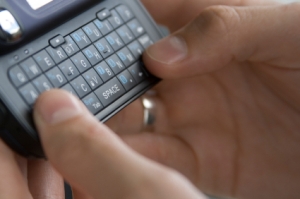Sometimes there are fact patterns that surprise you how far we have come with technology and the foolishness of people.
In People v. McInnis, the Defendant was convicted of attempted witness bribery. The Defendant attempted to keep witnesses from testifying against the Defendant’s nephew, in the nephew’s trial for robbery and kidnapping. People v. McInnis, 2009 Cal. App. Unpub. LEXIS 9046 (California Unpublished Opinions 2009).
The basis of the Defendant’s appeal was based on alleged “outrageous governmental conduct” by a police investigating officer.
The Court upheld the conviction.
The Bribe
One of the victims in the robbery and kidnapping case received the following letter with a cell phone number to call:
“The purpose of this letter and its contents is to compensate you for your initial loss that occurred as a result of the robbery. I believe you have at least 1 Thousand reasons to be compensated for your pain and suffering. However, I feel that because you are the true victim in this crime, you deserve much more compensation for your pain and suffering. While it’s obvious that the defendants don’t have the ability to adequately compensate you, I do have the ability to do so on their behalf.”
“Obviously this correspondence and agreement has to be kept confidential and not disclosed or shared with the District Attorney or Police. . . . Remember the District Attorney works for the people (you & me) and you have every right to tell the DA you don’t want to testify and he can’t force or threaten you to.” McInnis, at *2-3.
The letter ended with “there are at least 25 thousand reasons why you would like to immediately settle the case in a civil manner instead of being a witness in a criminal court.” McInnis, at *3.
The victim turned over the letter to the authorities who launched an investigation.
Other letters were sent to the two victims offering $50,000 to settle the criminal suit against the Defendant’s nephew. McInnis, at *5 (which should send ethics lawyers into orbit).
The investigating police officer left multiple phone messages with the number on the letter. A text message was sent to the investigating officer saying, “Leave me a message with your questions. I am going to send the money, I swear.” McInnis, at *6.
Tracking Down a Cell Phone
 The police investigation in tracking down the Defendant’s cell phone was a case study of how far we have come with technology.
The police investigation in tracking down the Defendant’s cell phone was a case study of how far we have come with technology.
The police officer was able to trace the exact sale date of the cell phone, the cell phone carrier (Virgin Mobile), the fake purchase name (Joe Gift), the store it was purchased from (Radio Shack), and that it was activated at a FedEx Kinko’s near the store where the Defendant purchased the phone. McInnis, at *6-7.
Virgin Mobile indicated the specific time, down to the minute, the cell phone number had been activated, including the fake name used for the Yahoo! email address. McInnis, at *7.
The police officer used “Yahoo! Emergency Disclosure Request Form” to determine the identity of the Yahoo! subscriber. McInnis, at *7.
The investigation showed the IP address where the account was activated was a FedEx Kinko’s in Los Gatos, California. McInnis, at *7. From there, the police were able to review the store security cameras and identify the Defendant later in Court. McInnis, at *7.
“Outrageous Conduct”
The “outrageous conduct” was the police officer overstating the threat against the victims on “Yahoo! Emergency Disclosure Request Form.” While the officer exaggerated the danger, the Court found this was not shocking conduct that rose to the level of “outrageous conduct.” McInnis, at *21-21.
What is Interesting about This Case…
Tracking down a suspect by IP addresses, fake email names and security video sounds like something out of “24.” These electronic finger prints are all markers of electronically stored information. Just as civil litigation is dealing with “forms of production,” criminal law have also adopted to the Digital Age.


 In case anyone was wondering, those Hands Free laws are Constitutional, at least in Illinois.
In case anyone was wondering, those Hands Free laws are Constitutional, at least in Illinois.  If someone is stopped for breaking a Hands Free law, an interesting question is whether the police can do a warrantless search of the cell phone.
If someone is stopped for breaking a Hands Free law, an interesting question is whether the police can do a warrantless search of the cell phone. During the one hour and twelve minute deposition, the attorney and client exchanged 5 more text messages. Ngai, 3. Below is the timing of the messages:
During the one hour and twelve minute deposition, the attorney and client exchanged 5 more text messages. Ngai, 3. Below is the timing of the messages:  The Court stated the Pro Hac Vice attorney violated Federal Rule of Civil Procedure Rule 30 by texting during the deposition. Ngai, 14. The Court equated the conduct with passing notes to the client that included instructions “intended to influence the fact finding goal of the deposition process.” Ngai, 15.
The Court stated the Pro Hac Vice attorney violated Federal Rule of Civil Procedure Rule 30 by texting during the deposition. Ngai, 14. The Court equated the conduct with passing notes to the client that included instructions “intended to influence the fact finding goal of the deposition process.” Ngai, 15. The Defendant argued the court erred in excluding text messages the victim sent after the assault. The Defendant claimed these messages were relevant and were not barred as hearsay. Loye, 3.
The Defendant argued the court erred in excluding text messages the victim sent after the assault. The Defendant claimed these messages were relevant and were not barred as hearsay. Loye, 3.  Trial Advocacy and Evidence professors teach law students that “authenticity is a precondition to the admissibility of evidence.” Loye, 4.
Trial Advocacy and Evidence professors teach law students that “authenticity is a precondition to the admissibility of evidence.” Loye, 4.  Williams v. City of Franklin, 2009 U.S. Dist. LEXIS 33200 (M.D. Tenn. Apr. 16, 2009) is an ESI free for all. The case is a local political drama that sounds like a Hollywood production. There are threatening text messages from an alderman and then rummaging through an employee’s laptops for pornographic images. There is Internet usage history and one key email message.
Williams v. City of Franklin, 2009 U.S. Dist. LEXIS 33200 (M.D. Tenn. Apr. 16, 2009) is an ESI free for all. The case is a local political drama that sounds like a Hollywood production. There are threatening text messages from an alderman and then rummaging through an employee’s laptops for pornographic images. There is Internet usage history and one key email message.  For example, Williams has no discussion of how text messages were collected. This is not a lawsuit with data to revival Enron or Verizon litigation, but dozens of text messages, email and arguably imaging two hard drives.
For example, Williams has no discussion of how text messages were collected. This is not a lawsuit with data to revival Enron or Verizon litigation, but dozens of text messages, email and arguably imaging two hard drives.  A “conspiracy” is an “agreement by two or more persons to commit an unlawful act.” Black’s Law Dictionary, Pocket Edition, 1996.
A “conspiracy” is an “agreement by two or more persons to commit an unlawful act.” Black’s Law Dictionary, Pocket Edition, 1996.  The sensitivity courts are showing to text messages and public employees’ reasonable expectation of privacy has been very impressive. This sensitivity is evident in cases such as Quon v. Arch Wireless Operating Co., Inc., which found that a police officer had a reasonable expectation of privacy in his messages, due to the police department’s informal usage policy on text messages. Quon v. Arch Wireless Operating Co., Inc., 2009 U.S. App. LEXIS 2259 (9th Cir. Cal., 2009).
The sensitivity courts are showing to text messages and public employees’ reasonable expectation of privacy has been very impressive. This sensitivity is evident in cases such as Quon v. Arch Wireless Operating Co., Inc., which found that a police officer had a reasonable expectation of privacy in his messages, due to the police department’s informal usage policy on text messages. Quon v. Arch Wireless Operating Co., Inc., 2009 U.S. App. LEXIS 2259 (9th Cir. Cal., 2009). If the facts were slightly different, it might be necessary for a computer collection expert to collect text messages or photos off a cell phone, BlackBerry or iPhone. In such situations, a collect expert can use a solution from
If the facts were slightly different, it might be necessary for a computer collection expert to collect text messages or photos off a cell phone, BlackBerry or iPhone. In such situations, a collect expert can use a solution from